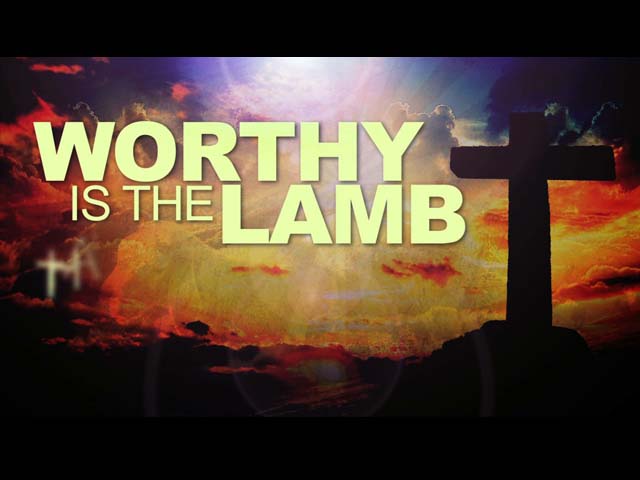-
How Does The Death Of A Lamb Save Us?
Contributed by Gordon Mcculloch on Jan 19, 2014 (message contributor)
Summary: Do you know why: using our dainty little communion set in our worship, is so superior to the Old Testament services where animals were sacrificed for God? From Genesis to Revelation, we answer that question.
Isaiah 49.1–7; Psalm 40.1–11; 1 Corinthians 1.1–9, John 1.29–42
Summary: Do you know why: using our dainty little communion set in our worship, is so superior to the Old Testament services where animals were sacrificed for God? From Genesis to Revelation, we answer that question.
This sermon was delivered to the congregation in St Oswald’s in Maybole, Ayrshire, Scotland on the 19th January 2014: by Gordon McCulloch (A Scottish Episcopal Church in the Dioceses of Glasgow and Dumfries).
“Please join me in my prayer.” Let the words of my mouth, and the meditation of our hearts, be acceptable in your sight, O Lord, our strength, and our redeemer. Amen. (Ps. 19:14)
Introduction: John the Prophet
In today’s reading we see John the Baptist’s first encounter with Jesus: the man whom he was preparing the way for … and the man he has been waiting to meet all his life.
Verse 29, “He saw Jesus coming to him, and said, Behold, the Lamb of God who takes away the sin of the world”!
Now when preparing this sermon, I dived right and continued on a theme of this encounter … but it did not take long before I noticed something very wrong with this verse. In fact it really bothered me for ages, can you see what is wrong? John said “Behold, the Lamb of God who takes away the sin of the world”!
No … then compare, Matthew 16:15, when Jesus said to Peter, “But whom say ye that I am? And Simon Peter answered and said, Thou art the Christ, the Son of the living God. And Jesus answered and said unto him, Blessed art thou, Simon {Peter}: for flesh and blood hath not revealed it unto thee, but my Father which is in heaven”.
This declaration of Peter was made at least two years after John the Baptists first encounter with Jesus; and some theologians say there is no way that John the Baptist could have said this about Jesus.
And that is what bothered me, I agreed with them, however, I did what most people do now, I googled it … and very quickly found an answer I agreed with.
The fact was, according to the bible, John the Baptist was first and foremost a prophet of God, and some say, the greatest in the Old Testament prophets. John the Baptist was the one who knew, and quoted the book of Isaiah backwards … in fact he quoted my favorite Old Testament chapter Isaiah 53, and that is some chapter, “He was oppressed and He was afflicted, yet He did not open His mouth; like a lamb that is led to slaughter, and like a sheep that is silent before its shearers, so He did not open His mouth”.
And what I love about this verse is the fact that it was written well over 400 years before today’s events, so John was in effect prophesying this event … (and just like Samuel of old, would announced that Saul was the one chosen by God to be king), John calls attention of the crowd towards Jesus as the “Lamb of God who takes away the Sin of the world” … That is Sin with a capital “S” meaning all sin; including every individual sin we have ever committed.
Lamb Sacrificed
And so with that out the way, we can ask ourselves “why must we look to Jesus as “the Lamb of God”; because a Lamb, if you think about it is a strange analogy; particularly if you are from a city or a large town.
Ok for us country folks here, and although few of us are farmers, we know that Lamb is very symbolic with the Jews back then … as it connected powerfully with them in the following ways:
Firstly, the lambs were a living symbol of innocence. Lambs were often pets, especially pet lambs that the mothers reject. These were greatly cherished … just in the same way we cherish dogs and cats … particularly when they are young, to see their playfulness and innocence.
We do not connect in the same way with a big smelly sheep; and so the death or sacrifice of such innocent and playful lamb had a profound effect on those watching the Lamb being sacrificed, and so to them, the price of such a sacrifice was high.
2. Secondly, the sacrifice of a lamb to every Hebrew was a reminder of the Passover all those years ago in Egypt; and it is still remembered and celebrated today; it is known as Yom Kippur, the Jewish day of Atonement, their holiest day of the year. I do not know if they still sacrifice a Lamb, as the symbol of salvation, but I do know, they did back then in the Old Covenant.

 Sermon Central
Sermon Central



